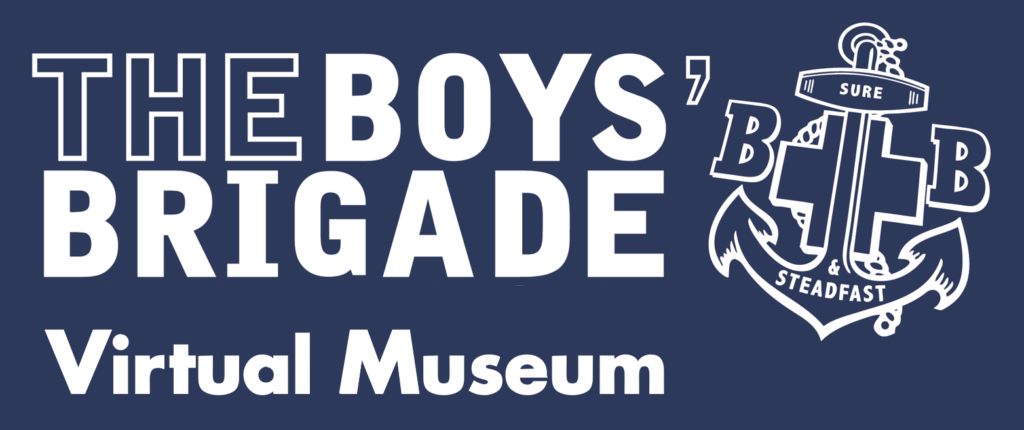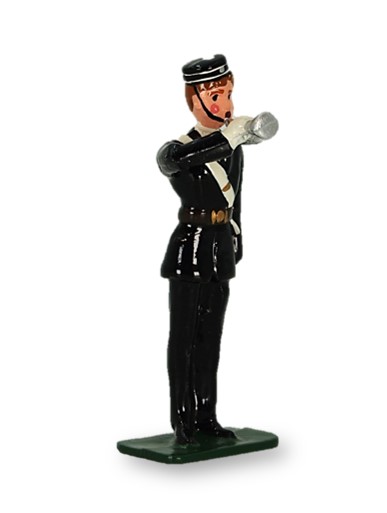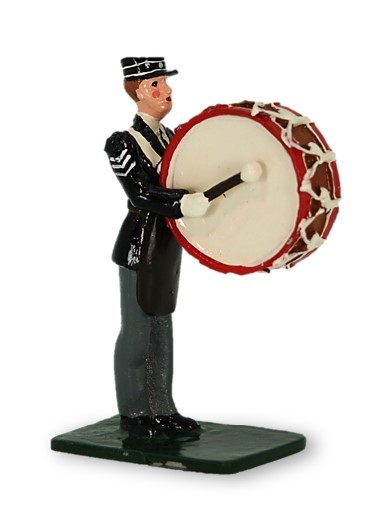Ireland
A brief history of The Boys’ Brigade in the Republic of Ireland
It was not long after Sir William Alexander Smith’s launch of the Boys’ Brigade in Glasgow that the movement reached Ireland. In December 1888 the 1st Belfast was formed, with the Belfast Battalion established in 1890.[1]
Shortly after, the 1st Dublin Company opened in 1891 and was located in St Matthias’ Church, Adelaide Road. Rev William Monk Gibbon, who at the time was the parish curate, founded the company. He had visited Rev RHS Cooper in Belfast to discuss the Dublin University Missionary Union, but whilst there he happened to pick up and read a book called “The Boys’ Brigade Manual.” According to the BB in the Republic of Ireland “He found in this book what he had been looking for to solve problems in his own parish, and in the same year with the aid of his Rector, Canon (later Bishop) Wynne, the 1st Dublin Company was formed.”[2] He would later go on to found another BB Company in Dundrum, only for it to be replaced by the Scouts in 1922.
The popularity of the BB in Dublin was evident, as within just two years the number of companies in Dublin city was over 20. Representatives from 8 of these companies met under the chairmanship of Rev Monk Gibbon, and on the 3rd March 1892 the Dublin Battalion was formed.[3] By 1900 Dublin had become the fourth largest battalion in the UK with 1132 boys, exceeded only by London, Manchester and Glasgow.[4]
Most companies were located in Church of Ireland (Anglican) parishes but some associated with other denominations such as the 4th Dublin (Presbyterian) and the 19th Dublin (Methodist). Between 1891 and 1918 a total of 47 companies existed at some point with 70% Anglican (33 companies), 21% Presbyterian (10 companies), 6% Methodist (3 companies) and 1 company associated with the YMCA.[5]
What is interesting to note is that as churches opened and closed according to shifts in population, companies that wanted to stay open tended to stick within their original denomination. For example, the 4th Dublin Company was originally located in the Scots’ Church (Presbyterian) in Dublin city centre, but in time would relocate to Malahide Presbyterian Church, in north county Dublin. Similarly, the 5th Dublin, originally in Charleston Road Methodist, (Rathmines) relocated to Dundrum Methodist in the south Dublin suburbs. This shift in population was noted as far back as 1947, and owing to it the annual Battalion Report commented that “Companies with a strength of over 30 boys are the exception rather than the rule”.[6]
Despite the popularity of the Brigade, the effects of external events, such as the Boer War, were acutely felt by the Battalion. In 1899 Dublin Battalion had 123 officers and 1175 boys, and in 1901 there were 131 officers and 1269 boys. Yet by 1905 numbers had reduced to 87 officers and 778 boys.[7] It was recorded that the 20th Dublin disbanded due to lack of boys in 1902, and that the 6th, 9th and 19th Companies disbanded due to lack of officers in 1903.[8]
However, the BB’s resilience and adaptability were demonstrated in the fact that by 1906, the Dublin Battalion had increased to 25 Companies, 119 Officers, and 972 boys.[9]
In these early years, sport and athleticism played an important role in the Battalion. From its founding, association football was a popular sport amongst the boys, and by 1905, there were 12 football teams in the Brigade’s Dublin football league.[10] However resources and adequate facilities were somewhat scarce, and made life difficult for the Battalion. For example, at a match between the 1st Dublin Company and the Argyll and Sutherland Highlanders, the game had to be abandoned because the ball burst, and no replacement could be found![11]
A significant number of Dublin Battalion members and Old Boys perished in both World Wars. There are plaques commemorating these men in churches around the city. Each year on Remembrance Sunday, they are remembered in churches in Dublin with the laying of a poppy wreath by current officers or parishioners. The playing of the Last Post on the bugle is also carried out by some companies in their respective churches.
Following the Great War, the past members of the 1st Company bought, and for many years met in, a house on Rathmines Road which named “the Old Corps Club”. They also bought a piece of land in Dolphin’s Barn called Chelgrove Park which was used for many years to play rugby and cricket until it was sold in the 1970s/80s. It was bought by the Dublin Corporation and used as soccer pitches and for many years afterwards was colloquially called “the Boys’ Brigade grounds”.[12]
It was during World War II that the Battalion celebrated its Jubilee. It was reported that despite the circumstances “work has gone on almost as usual” in 1941-42, with 685 NCOs and boys in the Battalion that session (with a further 518 in the Life Boys). This number represented a decrease from the 728 boys and NCO in the Battalion in 1938, just before the War began.[13] By the occasion of the Battalion’s Diamond Jubilee, boys would number 549.[14]
As the Brigade expanded over time, so did the sections associated with the Dublin Battalion. There were a large number of Life Boys sections, which morphed over time into Junior Sections. Anchor Boys sections also appeared in due course.
Throughout much of the 20th Century, the BB in the Dublin Battalion was a popular Christian youth organisation. A highlight of the BB calendar was the annual Founder’s Day Parade and Service held in St Patrick’s Cathedral in Dublin city centre. Hundreds of boys and officers would assemble in various Company HQs around the city, in locations such as Adelaide Road (1st), North Strand Schools (7th) Temple Street (14th) Irishtown (17th) and even Blackrock (6th), and would march into a central assembly point in the city centre, such as Molesworth Hall in Molesworth Street, or the DCM in Abbey Street, and then Parade across the city to and from St Patrick’s for the Sunday afternoon service – and then march back to their Company HQs again! As numbers in the Battalion reduced, the Founder’s Day Service moved in the mid-2000s to St Ann’s Church Dawson St, with a further decision taken in 2018 to move the service, on rotation, to a local church associated with each Dublin company.
On the 70th Anniversary of the founding of the Battalion, the annual Meeting of Brigade Council was held in Dublin, in Autumn 1962. Events were held in various locations such as Trinity College, St Patrick’s Cathedral, St Ann’s Church Dawson St, Landsowne Road Rugby Stadium (where a “Battalion Review” was held), Stephen’s Green (where there was a “March past”) and in the residence of the President of Ireland, Áras on Uachtaráin (where a reception was held for some senior Brigade officers).[15] Also of significance was the unique practice of raising and lowering of the BB flag on Dublin’s main thoroughfare – O’Connell St – at the beginning and end of the Council weekend. This was reported by the Battalion has having “caught the public imagination”.[16] The strength of the Battalion in its 70th year was some 150 Officers, Warrant Officers and Staff Sergeants, 453 Boys, and 305 Life Boys.
It would not be until 2009 when Dublin would again host the Brigade Annual Council. Council in 2009 included a service in Booterstown involving a parade and march past, as well as a dinner on the Saturday evening with music supplied by members of the Stedfast Band who also supplied the music for the service.
Like many BB districts and battalions, music played an important role in the Dublin Battalion. Companies that had brass bands at various points included the 1st, 6th, 7th and 14th Companies. Those that maintained bugle bands included the 3rd, 5th, 29th and 32nd Dublin. The 12th and 31st Companies had a trumpet band, the 14th is recored as having a silver band,[17] and the 26th Company (Drogheda) had a fife band.[18] There was an annual Silver Bugle Competition to showcase the talent of the battalion. This musical tradition continues to contribute to the cultural heritage of Dublin city to this day. Two of Dublin’s main brass bands were formed by past members of the 14th Company (St George’s Brass Band) and the 6th Company (the Stedfast Band), and many past BB members play in these bands today. The Stedfast Association Brass Ensemble continues to provide musical accompaniment at Brigade events.
In addition to music, other interests and activities were present throughout much of the Battalion’s history, including First Aid and sporting competitions in soccer and rugby (the Baird Cup).
A significant event in life of the Battalion was celebrating the 1983 Brigade Centenary. An Inspection and Review was held on 21st May 1983 in The Royal Dublin Society Showgrounds in Ballsbridge (rugby fans will know it as the current home ground of the highly successful Leinster Rugby Team). Paraded at this event was a new National Flag presented as a gift to the Battalion by some generous past members. Well over 1000 Young People from all over the District took part in that Review, which took place in the presence of His Excellency, Dr Patrick Hillery, President of the Republic of Ireland. That September, over 150 Members and Past Members from all over the District made their way to Glasgow, by various means, for the memorable BB Centenary Celebrations in Ibrox Stadium and elsewhere in the city. A special Thanksgiving Service was held in St Patrick’s Cathedral on the 9th October 1983 where the preacher was the Church of Ireland Bishop of Cork, Rev Dr Samuel Poyntz, a District Honorary Vice President. At the time, RTÉ News reported the service as having been attended by President Hillery, and some 1000 boys and Past Members who afterwards paraded with a salute taken by District President Rev Kevin Dalton.[19] Also, a celebratory concert was held as part of these centenary celebrations in the National Concert Hall. It included a mass band comprised of members from the 1st Dublin Company, St Georges, and Stedfast Bands.
A Service to mark the centenary of the Boys’ Brigade in Dublin was held in St Patrick’s Cathedral in Dublin in 1991, where the guest preacher was Rev S Kenneth Todd of the Lurgan Methodist Circuit. It was attended by The Lord Mayor of Dublin, Seán Haughey, and again by President Hillery. RTÉ News reported at the time of approximately 700 boys being part of 20 companies across the city, with 2000 members nationally.[20] It also noted that whilst numbers once again had been dropping in companies in the city centre over the last 20 years due to population shifts, nationally there had been a slight increase in members.
Many past members will remember the summer camping trips to locations such as Trearrdur Bay in Wales, Arklow in County Wicklow, the Isle of Wight, and the Isle of Man, not forgetting some to Donabate/Portrane, which was in the wilds of north county Dublin at the time!
Another constant feature in the life of the Battalion right up to the present day has been the Lewis-Crosby Squad Drill Competition. This well fought competition regularly featured teams from across the Battalion, in 12-man, 10-man, or more recently 5-man drill squads. Originally the winning company of the Lewis-Crosby Shield received the honour of having their company name embroidered onto the Battalion Colour, which was a gift from Lord Ardilaun (of the famous Guinness family) to the Battalion in 1908 and is still in regular use today. In more recent times the winning Company has been given the honour of providing the Battalion/National Colour Party for the following Session.
New developments in recent times have included highlights such as the Junior Section big weekend away in Ovoca Manor or Multyfarnham, the Junior figure marching competition (which attracts teams from across Ireland), the swimming gala, drama competition, and residential trips to various activity centres.
The Boys’ Brigade in the Republic of Ireland has changed considerably over time, however, despite the changed circumstances, the BB remains a very active youth organisation throughout Ireland. The vision of Sir William Alexander Smith most certainly lives on – that young people would mature in a safe Christian environment and experience “life to the full” through faith in Jesus Christ.
Gavin Rothwell
Media Files
References
[1] https://belfastbb.org.uk/our-history/
[2] https://boysbrigade.ie/our-history/
[3] https://boysbrigade.ie/our-history/
[4] Dublin Evening Mail 27th January 1900.
[5] Brendan Power Thesis p163.
[6] Dublin Battalion 55th Annual Report 1946-47.
[7] Brendan Power Thesis p283
[8] Brendan Power Thesis p283.
[9] Brendan Power Thesis p218.
[10] Brendan Power, ‘The Functions of Association Football in the Boys’ Brigade in Ireland, 1988–1914’ in Leisure and the Irish in the Nineteenth Century ed Leanne Lane and William Murphy (2016 Liverpool University Press) page 45.
[11] Brendan Power, ‘The Functions of Association Football in the Boys’ Brigade in Ireland, 1988–1914’ in Leisure and the Irish in the Nineteenth Century ed Leanne Lane and William Murphy (2016 Liverpool University Press) page 47.
[12] The personal recollection of Mr Peter O’Callaghan, past captain of the 1st Dublin Company.
[13] Dublin Battalion 47th Annual Report 1938-39.
[14] Dublin Battalion 60th Annual Report 1951-52.
[15] Dublin Battalion 70th Annual Report 1961-62.
[16] Dublin Battalion 70th Annual Report 1961-62.
[17] Dublin Battalion 70th Annual Report 1961-62.
[18] Dublin Battalion 46th Annual Report 1937-38.
[19] https://www.rte.ie/archives/2018/0921/995190-boys-brigade-centenary/
[20] https://www.rte.ie/archives/collections/news/21362803-boys-brigade-anniversary/




